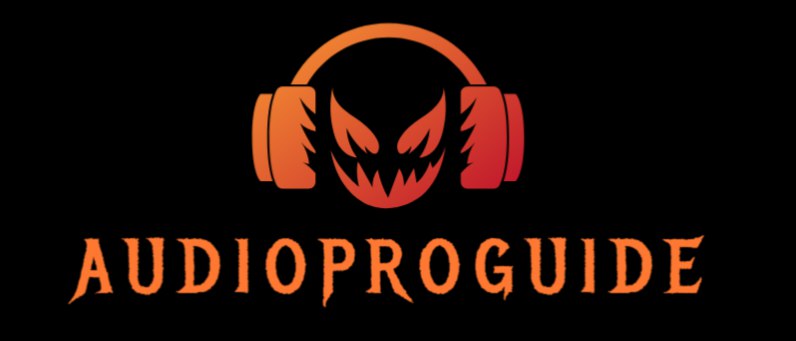For music lovers, the quest for sonic nirvana is a never-ending journey. We chase down pristine vinyl pressings, obsess over high-fidelity equipment, and constantly tinker with our listening environments, all in pursuit of that elusive perfect sound. But amidst this sonic pilgrimage, a common belief often emerges: converting MP3s to WAV files unlocks an audiophile’s utopia. Is this digital alchemy real, or merely a shimmering mirage in the audio desert?
General Information about Audio Compression Formats
Audio compression formats play a pivotal role in the storage, transmission, and playback of digital audio. Their primary function is to strike a balance between reducing file sizes and preserving perceptual audio quality. In the realm of audio compression, two overarching categories exist: lossless and lossy compression.
Lossless compression formats, such as FLAC and ALAC, prioritize preserving the entirety of the original audio data during compression and decompression. These formats are particularly favored in scenarios where maintaining the highest possible audio fidelity is crucial, such as in archival purposes or professional audio production.
On the other hand, lossy compression formats, exemplified by MP3, AAC, and Ogg Vorbis, adopt a different approach. These formats discard certain elements of the audio data that are considered less critical to human perception. While this allows for significant reductions in file sizes, it inherently introduces a degree of information loss, impacting the overall audio quality.
The concept of bitrate is central to understanding audio compression. Bitrate refers to the amount of data processed per unit of time, commonly measured in kilobits per second (kbps) or megabits per second (Mbps). Higher bitrates generally result in better audio quality but come at the expense of larger file sizes.
The choice of compression format depends on the specific requirements of the application. Lossless formats are preferred in situations where audio fidelity is paramount, such as in professional music production. In contrast, lossy formats find widespread use in applications where storage and bandwidth considerations take precedence, such as in online music streaming and portable media devices.
As technology evolves, audio compression continues to be a dynamic field with ongoing efforts to improve efficiency, reduce artifacts, and enhance the overall listening experience for consumers and audiophiles alike.
Understanding MP3 Compression
MP3, short for MPEG Audio Layer III, stands as one of the most ubiquitous and widely adopted audio compression formats. Its popularity can be attributed to its ability to significantly reduce file sizes while maintaining a perceptually acceptable level of audio quality. To comprehend MP3 compression, it is essential to delve into the intricate mechanisms that underlie its encoding process.
- Psychoacoustic Model: At the heart of MP3 compression lies a sophisticated psychoacoustic model. This model is designed to mimic the human auditory system, identifying elements of the audio signal that are less perceptually significant to the average listener. By leveraging this model, MP3 encoding software can discard portions of the audio data that are theoretically less noticeable to the human ear.
- Frequency Masking and Temporal Masking: MP3 compression takes advantage of phenomena like frequency masking and temporal masking. Frequency masking occurs when a louder sound makes a nearby quieter sound less audible. Temporal masking involves making softer sounds less audible when they follow a louder sound. By exploiting these properties, MP3 encoding algorithms can selectively discard portions of the audio signal without a perceptible impact on the listener.
- Bitrate and Compression Ratio: The user-defined bitrate plays a pivotal role in MP3 compression. Bitrate refers to the amount of data allocated to represent one second of audio. Higher bitrates lead to larger file sizes but generally result in better audio quality, as more data is retained during compression. The compression ratio, defined as the ratio of the uncompressed audio file size to the compressed MP3 file size, provides a measure of the level of data reduction achieved.
- Variable Bitrate (VBR) vs. Constant Bitrate (CBR): MP3 offers both variable bitrate (VBR) and constant bitrate (CBR) encoding options. CBR maintains a consistent bitrate throughout the entire audio file, while VBR dynamically adjusts the bitrate based on the complexity of the audio content. VBR often results in more efficient compression, allocating higher bitrates to complex sections and lower bitrates to simpler sections, optimizing file size without compromising quality.
- Trade-off between Compression and Fidelity: Despite its efficiency in reducing file sizes, MP3 compression introduces a trade-off between compression and fidelity. The discarded audio data, while theoretically less noticeable, can impact the overall audio quality, particularly for discerning listeners or in critical audio production scenarios.
In summary, MP3 compression is a complex process that leverages psychoacoustic principles to achieve significant data reduction while attempting to preserve perceptual audio quality. As technology advances, newer audio compression formats continue to emerge, offering improved efficiency and addressing some of the limitations inherent in traditional formats like MP3.
Advantages of the WAV Format
The WAV (Waveform Audio File Format) format stands out as a preferred choice for audiophiles and professionals due to its uncompressed nature and fidelity-centric design. Understanding the advantages of the WAV format provides insights into why it remains a cornerstone in applications demanding the highest audio quality.
- Uncompressed Audio: WAV files store audio data in a raw, uncompressed format. Unlike compressed formats like MP3, which discard certain audio information to reduce file sizes, WAV retains the complete and unaltered audio signal. This results in a faithful reproduction of the original recording without any loss of fidelity.
- High Audio Fidelity: The absence of compression in WAV files ensures that every nuance, detail, and subtlety of the audio recording is preserved. Audiophiles, sound engineers, and musicians often favor WAV for its ability to deliver a true representation of the recorded sound, making it ideal for critical listening and professional audio production.
- Wide Compatibility: WAV enjoys broad compatibility across various audio platforms, software, and hardware devices. Its simplicity and lack of compression algorithms make it a universally supported format, ensuring seamless integration into different audio workflows, editing software, and playback systems.
- Suitability for Archiving: WAV is often chosen for archival purposes due to its preservation of original audio quality. In archival contexts, maintaining the integrity of the audio content over time is crucial, and WAV’s uncompressed format ensures that archived recordings can be reliably accessed and used in the future.
- Flexible Bit Depths and Sample Rates: WAV supports a range of bit depths and sample rates, providing flexibility for professionals to choose settings that match the requirements of their specific projects. This versatility makes WAV suitable for a wide array of applications, from high-resolution audio production to multimedia projects.
- Minimal Processing Overhead: Since WAV files are uncompressed, they require minimal processing overhead during playback. This characteristic makes WAV well-suited for applications where real-time audio processing or editing is necessary, as the audio data can be accessed and manipulated without the need for decompression.
| Criteria | MP3 | WAV |
| Compression | Lossy compression | Uncompressed |
| File Size | Smaller | Larger |
| Fidelity | Some loss of audio quality | Full audio fidelity |
| Application | Streaming, portable devices | Professional audio production, archival use |
| Compatibility | Widely supported | Universal support across platforms |
| Bitrate | Adjustable | Fixed or variable |
| Editability | Limited due to lossy compression | Easily editable without loss of quality |
| Storage Efficiency | Higher compression ratios | Larger file sizes, less efficient storage |
| Popular Usage | Everyday listening, convenience | Audiophile listening, professional audio work |
Problems When Converting MP3 to WAV
Converting audio files from the MP3 format to WAV is not a straightforward process, and it introduces several challenges that can affect the resulting audio quality. The inherent differences between the compressed MP3 format and the uncompressed WAV format contribute to these issues.
One primary problem stems from the lossy compression nature of MP3. During the encoding of MP3 files, certain audio data is discarded based on psychoacoustic principles to achieve compression. When converting such compressed files to WAV, the lost information cannot be fully recovered. The upsampling process may result in larger file sizes, but it doesn’t inherently restore the lost audio details, leading to a potential compromise in overall audio fidelity.
Artifacts, a byproduct of the MP3 compression algorithm, can become pronounced during the conversion to WAV. These artifacts may manifest as distortions, unusual tonalities, or audible glitches in the audio signal. The attempt to reconstruct the audio data, which was initially discarded during MP3 compression, can introduce artifacts that were not present in the original uncompressed recording.
The dynamic range, or the difference between the quietest and loudest parts of the audio, can be adversely affected during the MP3 to WAV conversion process. MP3 compression often involves reducing the dynamic range, and attempting to restore it in the WAV format may not fully recover the original breadth of the audio signal. This limitation can impact the overall perceived depth and clarity of the converted audio.
Additionally, the upsampling process itself may introduce interpolation errors, especially when attempting to convert MP3 files with lower bitrates. These errors can result in a less smooth and accurate representation of the audio waveform, affecting the overall smoothness of the sound and potentially introducing undesired artifacts.

